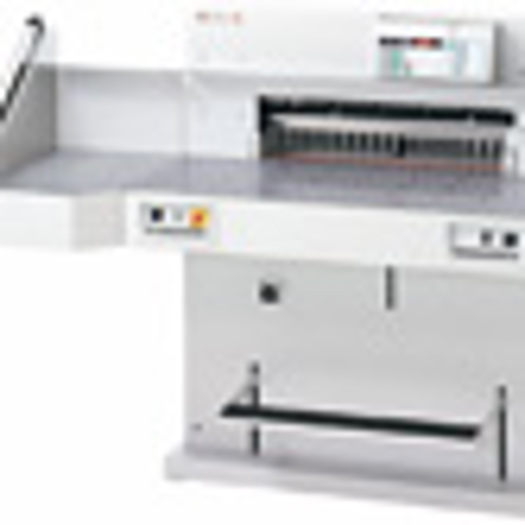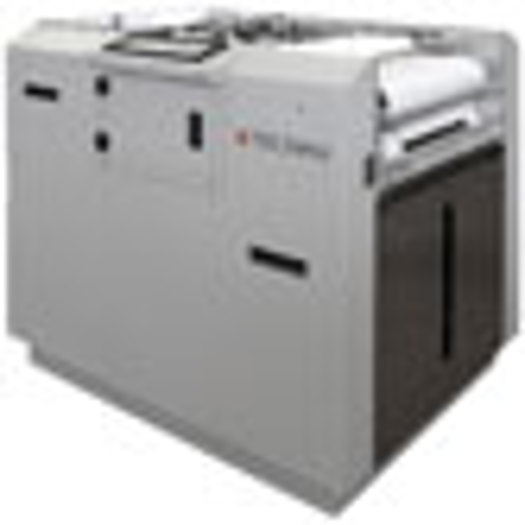A guillotine may well be nothing more than a machine that cuts paper, but the efficiency with which it carries out that simple task can still greatly affect the performance of a print operation. If a guillotine can’t keep pace with the work that goes through it, the whole business will suffer.
That’s why the main consideration when looking to buy a new guillotine is whether it will ease any bottlenecks in the bindery, says Intelligent Finishing Systems (IFS) showroom manager Bill Kenny.
"When choosing a guillotine, customers should weigh up accuracy, speed and consistency of throughput, as well as quality of cut and build," says Kenny. "And then there’s touchscreen technology, which can improve makeready times and reduce waste."
Program possibilities
Perfecta guillotines, sold by IFS, come with their own sheet cutting programs. The operator inputs the sheet size and the most efficient cutting sequence is calculated and displayed. The sheet can be viewed on screen in a PDF and the whole cutting process is illustrated.
"Connectability through CIP4 enables operators to see the job on the colour touchscreen, ensuring the cuts are being made in the right places," says Kenny. "It also enables communication from the pre-press so jobs can be sent directly to the guillotine. Jobs can readily be tracked as well, so everyone is aware of what stage the work is at in real time."
A more basic aspect to consider when buying a guillotine is how frequently it will be used and whether two smaller guillotines would be more productive than a single larger one. "In the event of a breakdown do you need a back-up?" asks Duplo International trade marketing executive Marc Legge.
The type of print that will go through the guillotine also needs to be factored in, suggests Legge. "Generally speaking, you’ll need a larger-format guillotine for litho than digital use. If it’s for digital, consider a guillotine with a false clamp plate and infinitely adjustable pressure. This will help avoid damage to the print," he adds.
Materials handling equipment, such as joggers, pile turners and hoists, not only take the strain out of manual lifting – every health and safety officer’s nightmare – but they also boost productivity. Pile turners, for example, can turn paper on the correct machine board ready to feed into the press, and then turn the printed product again for folding.
Working with a guillotine, of course, brings its own associated health and safety issues. Checks should be carried out on guillotines every six months for them to be covered by insurance policies.
WHAT'S NEW IN... GUILLOTINES & MATERIALS HANDLING
• Commercial printer Optichrome recently installed a Wohlenberg 115 guillotine, the first to be sold by UK distributor Friedheim International. Optichrome chairman Ted Stephens claims "guillotines are the cornerstone of any print business"
• In November, point-of-sale printer Artform International invested in a Polar 115 X Plus from Heidelberg. The high-end unit comes with Compucut programming, stacklift, jogger and Transomat downloading devices
• Also in November, Baumann launched an automatic jogger aimed at handling difficult materials. Available in the UK through Friedheim International, Baumann claims the BSB 3 L Professional is capable of jogging materials such as metallic paper, pharmaceutical inserts or labels, quickly and reliably
• Duplo unveiled an A3 electric guillotine from Ideal last summer. The 430mm-wide 4250 is aimed at copyshops and small companies with limited space. It features an electric lamp and blade drive capable of a cut height of 40mm
Buyers' Guide: Guillotines & materials handling

Guillotines play a vital role in any print outfit so ensuring they function slickly and in tempo with the rest of the operation is key, discovers Noli Dinkovski









